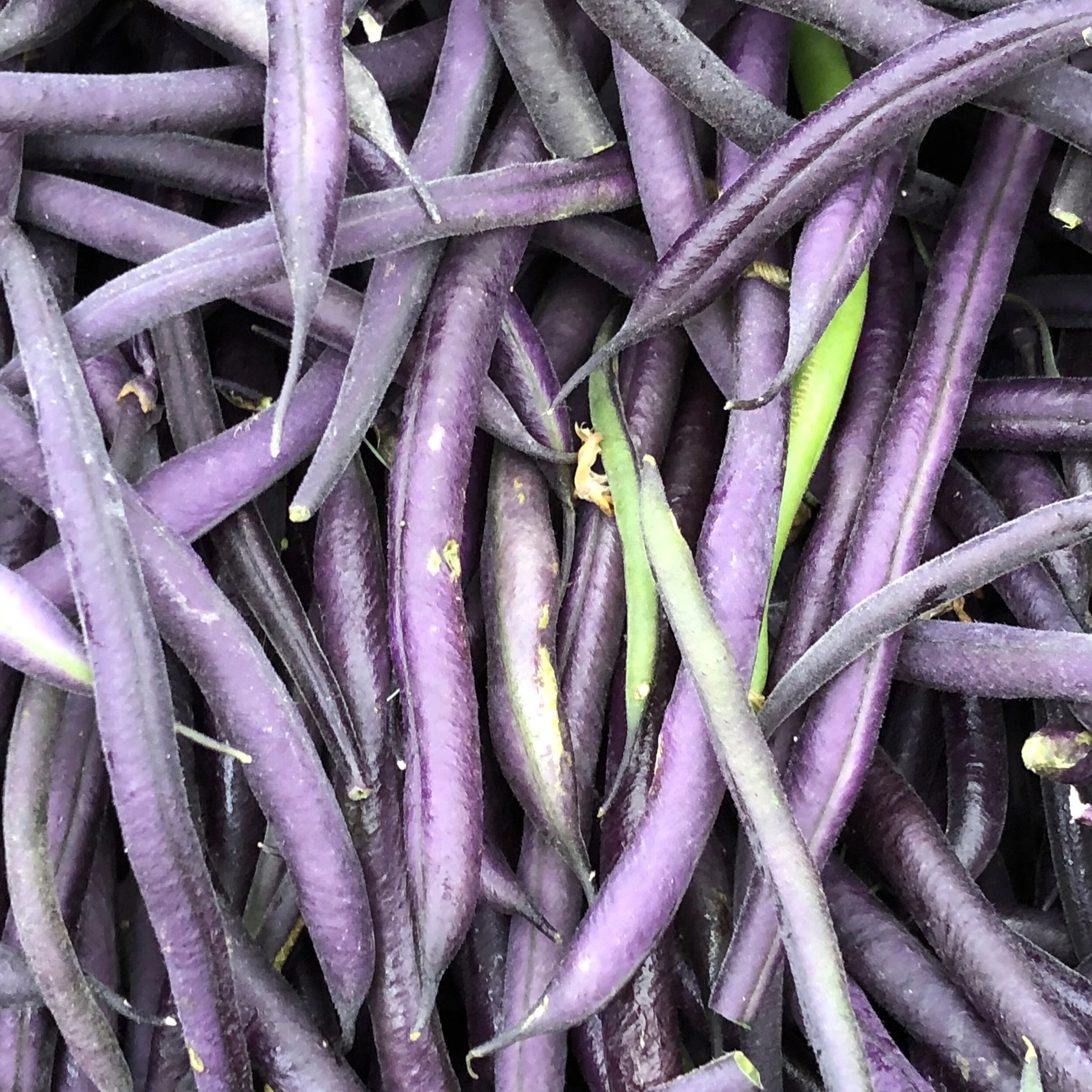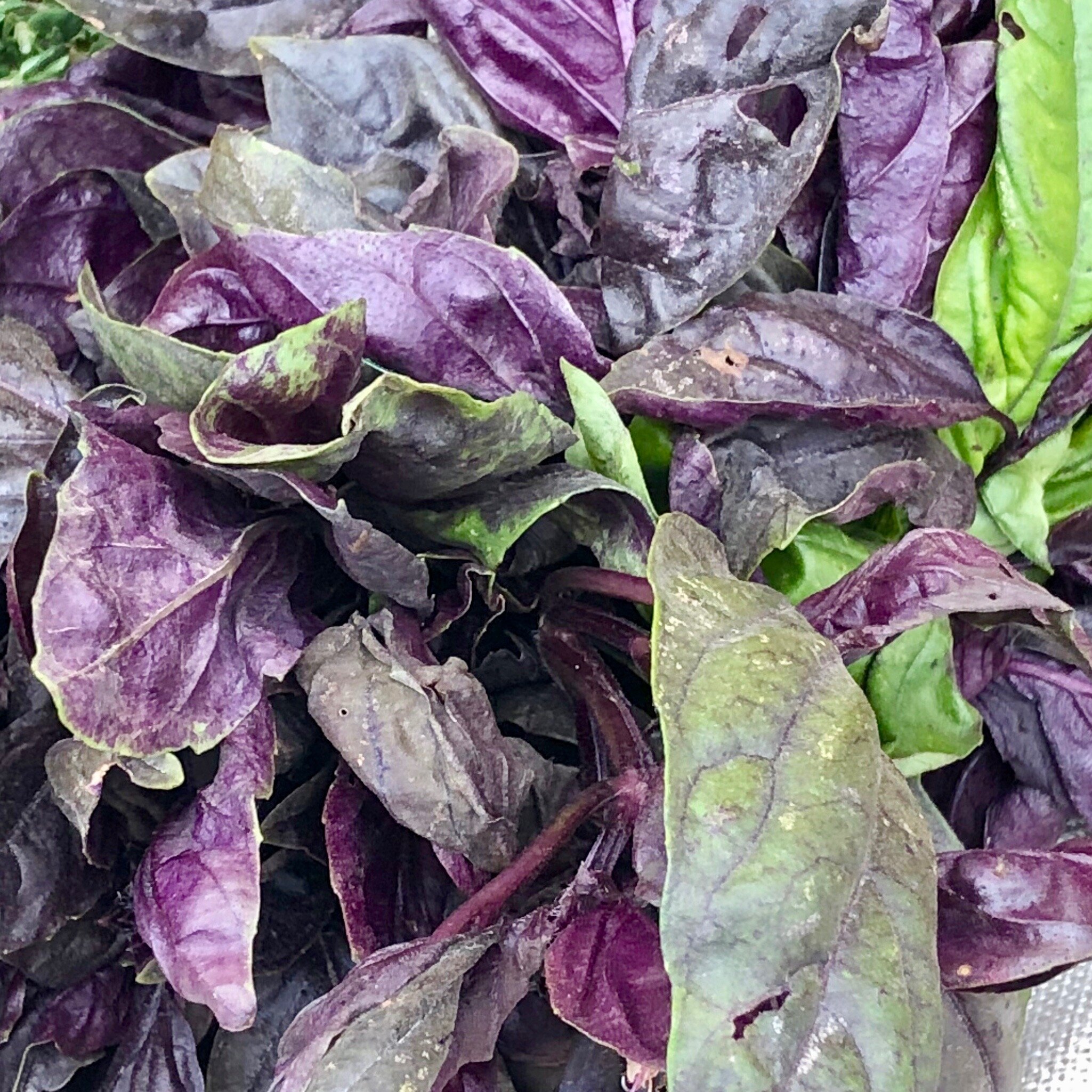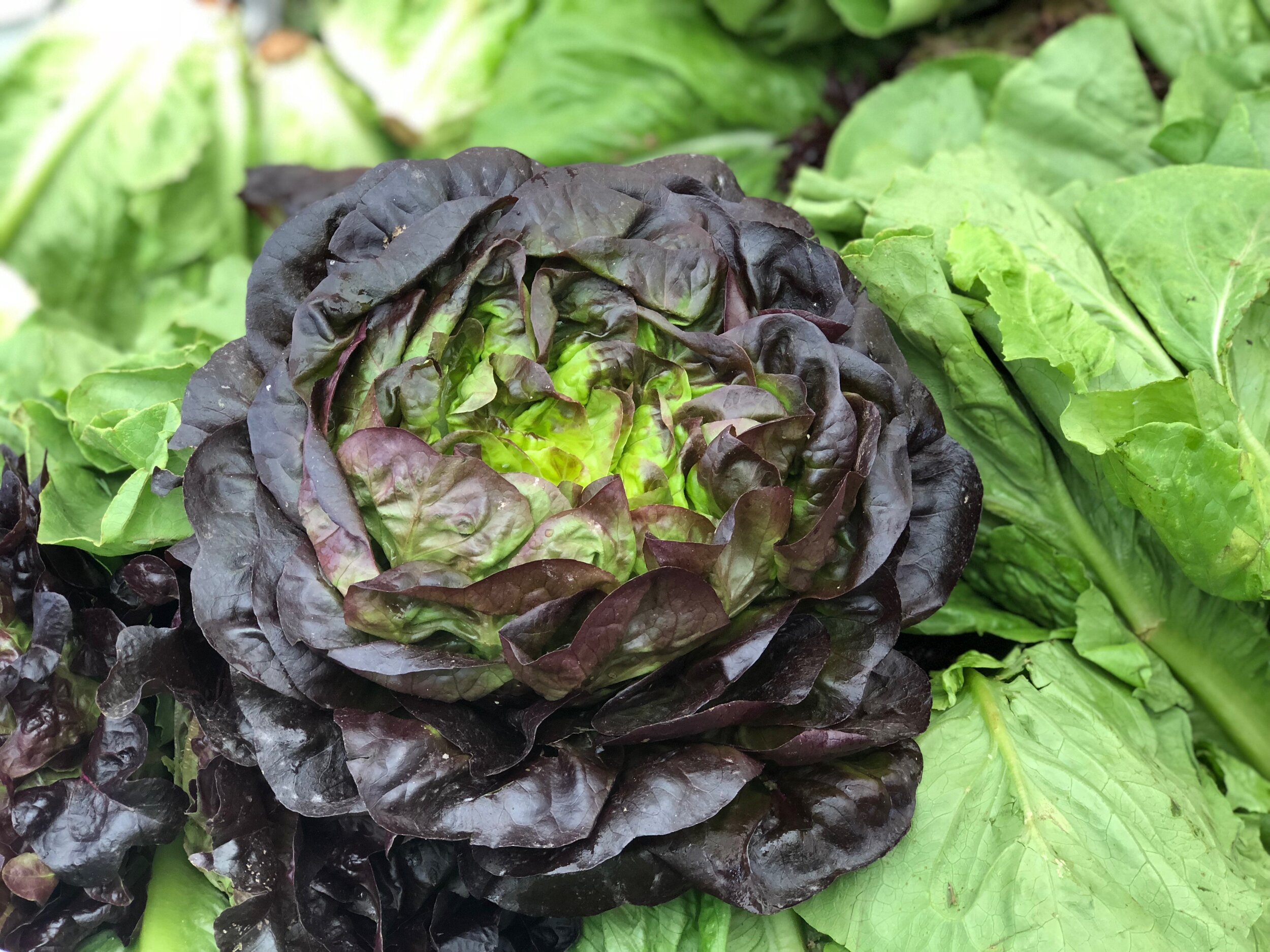A Vegan Charcuterie Board for Tu B'Shvat
/Tu B’Shvat, the "birthday of the trees," celebrates the trees and fruits with which the Land of Israel is blessed. Celebrate this quirky holiday by making a homemade vegan charcuterie board.
Read MoreTu B’Shvat, the "birthday of the trees," celebrates the trees and fruits with which the Land of Israel is blessed. Celebrate this quirky holiday by making a homemade vegan charcuterie board.
Read More
Nature never ceases to impress me:
The Romanesco is one of the most beautiful vegetables I’ve ever encountered. As a member of the Brassica family, it is technically a broccoli but visually closer to a cauliflower.
The Romanesco’s beauty is enhanced by its mathematically precise form: a fractal pattern and a Fibonacci sequence formed by the spirals of the buds. It is believed to have originated in Italy in the 16th century as a result of selective breeding. But how did it attain that incredibly mathematical shape? That is unknown.
This remarkable-looking vegetable contains lots of zinc, carotenoids, iron, vitamin C and folate. It is crunchier than a cauliflower, with a more nutty, earthy flavor.
We like it steamed and seasoned with olive oil and apple cider vinegar. It can also be stir-fried with a bit of low-sodium tamari sauce.
If you haven’t tried one yet, the new year is a perfect time to sample one!
I try to bring my wife and kids a new vegetable or variety as often as possible. There’s fun in the discovery and the ensuing culinary experimentation. At the very least, it results in memorable dinnertime conversation. For Rosh Hashanah, we got two new fruits: a “paper shell” pomegranate, which looks like an albino version of the familiar red pom; and a sapote, which, after 3 weeks, is still waiting to ripen in our kitchen!
Autumn is the time when so many fascinating new fruits and vegetables spring into season. All the incredible hues that we’ve seen around the farmer’s market this season give new meaning to the term “fall colors”: red, white, pink, black, brown, yellow, orange.
And purple. Lots and lots of purple.
Purple means the plant contains anthocyanins, a flavonoid antioxidant that also manifests as red, blue or black. This is the same compound that gives blueberries its hue.
This week, we found purple beans, purple basil and Salanova lettuce.

Beneath the royal purple sheen, purple beans are green beans or wax beans in disguise. They are sometimes referred to as Royal Burgundy and Royal Purple.
Sadly, the purple color fades when the beans are cooked, revealing an ordinary-looking pale lime bean. After all the buildup around this novelty of a bean, my kids were less than wowed when the plate of ordinary-looking beans showed up at the dinner table. But flavorful they were!
Next time, we will steam them or eat them raw to retain the purple color.

The purple “opal” basil was a hit with the kids. Purple basil, you may ask? Well yes, and strikingly so: The leaves are variegated deep purple and green, giving it a gorgeous color profile. The taste is reminiscent of anise or fennel, slightly more bitter and savory than traditional green basil. It is intensely aromatic.
Needless to say, my kids competed on who could eat the most purple basil leaves at one sitting.
Beyond dinner table food contests, where else can this honorable herb be used? As with green basil, the purple opal variety has medicinal uses as well:
As a tea to calm the digestive tract
As a nausea remedy
Interestingly, it is often grown next to tomatoes, as it repels tomato pests. Who knew that this common culinary combination – tomatoes and basil – could be rooted in nature?!

What can possibly be exciting about a lettuce? It’s among the most common salad vegetables around. Yet there are so many varieties: iceberg, romaine, red leaf and butter, for instance. But it’s no surprise that some of the more unusual varieties can be found at local farmer’s markets. Among them is Salanova lettuce, which you can get from Sunrise Organic Farms at the Larchmont Farmer’s Market.
Salanova lettuce is relatively new on the market. It resembles an oversized baby lettuce. This red-leafed variety was first sold in 2005. (The Washington Post had a fascinating article about it a few years back.) It’s crunchy like an iceberg lettuce but with a mild, buttery flavor. The burgundy-colored leaves contain anthocyanins.
It is also incredibly efficient to prepare and serve Salanova:
With most lettuces, the leaves are joined around a central core and must be peeled off layer by layer. But Salanova’s leaves are all joined at the base. Just cut off the base and all the leaves fall into a pile, ready to be tossed into a famil-sized salad.
How convenient! We think so too.
I’d love to turn the culinary tables on you, my readers:
What interesting new fruits or vegetables have you tried this season? What new fruits did you feature on your Rosh Hashanah table recently? How did your kids react to them?

hungarian bell peppers // locally grown at underwood farms
Bell peppers are not only delicious but also super, super healthy and healing.
When you get sick, you are taught to consume vitamin C, usually in the form of a citrus fruit. Did you know that peppers have an abundance of vitamin C – way more than citrus, in fact? Green peppers contain double the vitamin C by weight as citrus 🍊. And red and orange peppers 🌶 contain FOUR times as much! That makes them the #1 vegetable source of vitamin C (papaya is #1 overall). Red bell peppers also contain 11x more beta carotene than green bell peppers. Wowsers!
But wait…there’s more! Peppers are also high in phytonutrients carotenoids and flavonoids such as quercetin (a natural antihistamine) and kaempferol that protect the body from free radical damage.
This begs the question: Why are green peppers relatively lower in vitamin C and beta carotene than their more colorful companions? It turns out that they are the same pepper! A green pepper is merely a less ripe version.
How are you enjoying your peppers this summer? I like mine simple… straight out of the fridge and sliced.

Ch-ch-ch-cherry bomb!
If you want to turn up the heat this summer, try a cherry bomb pepper. These adorable innocent-looking fruits resemble fat cherries. (They are botanically fruits because they contain seeds.) The thick flesh has a sweet flavor that imparts little to no heat. But as the name suggests, your mouth is in for an explosion of heat if you eat the seeds.

Realistically, these peppers feel more like a mild jalapeño than a red hot chili pepper, ranking at 2,500-5,000 Scoville units. The Scoville scale measures the heat level, which is produced by capsaicin, the chemical that gives hot peppers their “hotness”.
Cherry bombs may be eaten raw (the flesh is not spicy, just the seeds), pickled as a side dish at a barbecue or stuffed and baked. Nevertheless, my kids had a blast (pun intended) tasting them!
We love peppers. We can’t get enough of them this time of year! Predictably, my kids wanted to know where they come from and what they are best known for.
Peppers are nightshade vegetables (botanically related to cayenne, chili pepper, eggplant, tomatoes, goji berries and ordinary potatoes). This means that they contain lectin proteins to ward off insects and other predators. But they can cause gut issues in some people. Peppers were first cultivated in South America about 5,000 years ago and were introduced into Europe in the 16th century.
Peppers come in an astonishing bounty of colors, including red, orange, yellow, green, white, purple and brown. They also range from sweet (bell peppers) to hot and spicy (chili peppers 🌶). The carotenoids and flavonoids in these peppers are responsible for the vivid colors. The only pepper with no capsaicin, though, is the bell pepper.
Among the sweet varieties, what’s the taste difference between the colors? Green and purple peppers are more bitter and tangy, while red, orange and yellow are sweeter and almost fruity. While sweet bell peppers do contain a small amount of sugar, it is their lack of capsaicin (the alkaloid that gives hot peppers their “hotness”) that allows the sweetness to come through.
Already this season, we’ve brought home red, orange, yellow, green and brown bell peppers. And did you know that paprika is derived from ripened, dried and powdered sweet bell peppers? My kids will be excited to know that their favorite spice is in fact derived from a pepper!

Onions are a family favorite. We consume them boiled in soups, baked in the oven and even raw in summer salads. As far as sweet varieties go, though, I’ve only experienced Texas sweet onions.
At the South Pasadena Farmer’s Market, I encountered white and red Walla Walla sweet onions, a new variety of sweet onion that I had never seen. Apparently, the red variation debuted in 2018.
They are super tasty. As it turns out, this onion’s mild taste and lower pungency is due to the reduced sulfur content and higher water content.
Fun fact:
In 2007, the Walla Walla was designated as the official vegetable of Washington State. In 2017, The Seattle Times gushed effusively over this vegetable as an “elusive, alluring superstar, the kind with both the witty repartee and the winning smile. Rubenesque, with gossamer skin”.
That’s quite an endorsement!
You might have seen wheatgrass in your green smoothie at your local health food store. It’s also rather ubiquitous at farmer’s markets. It first became popular in the United States in the 1930s.
But what is it?
It is the freshly-sprouted leaves of the wheat plant, harvested 7-10 days after sprouting. Wheatgrass is a concentrated source of numerous vitamins and minerals, namely A, C, E, K, B6, zinc, iron, selenium and manganese and may provide antioxidant and anti-inflammatory properties. It is usually taken to flush toxins from the body and provide a burst of energy. I’ve only tried it in smoothies and it can be quite bitter.

The best snacks for kids have just a single ingredient. No refined flours, added sugars, excess salt or cheap cooking oils. Enter sugar snap peas.
My kids go crazy over sugar snap peas. It’s one of their favorite after-school snacks, and it happens to be a single-ingredient snack, the best kind. These adorable little packets of nutrition are low in calories and high in soluble fiber – the type that helps regulate blood sugar levels. As a finger food, sugar snap peas are an excellent substitute for potato chips, pretzels and cereal bars.
Lately, we’ve also discovered a variant: the purple sugar snap pea. While this variety is not as sweet, it is very crispy and goes quite well in a stir fry.
What’s your kids’ favorite single-ingredient snack?

One of the most beautiful vegetables during the Spring season is the Romanesco. It is technically a broccoli but visually closer to a cauliflower. This remarkable-looking vegetable contains ample amounts of zinc, carotenoids, iron, vitamin C and folate.
Both the fractal pattern and the Fibonacci sequence formed by the spirals of the buds pique my mathematical side.

Kosher food can be both tasty and nutritious. It need not be filled with cheap refined carbs, sugar, salt, preservatives or filler. The purpose of Consciously Kosher is to teach people how to eat a kosher diet rich in nutritious, predominantly unprocessed whole foods. The recipes and meal hacks are simple and quick, to accommodate parents juggling careers and multiple kids.
Articles | Nutrition | Health & Wellness | Recipes | Workshops
Consciously Kosher © 2023 Michael Tanenbaum